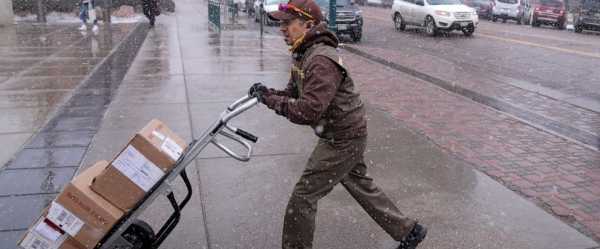
WASHINGTON — For more than a year, the Federal Reserve's inflation fighters have been tightening their grip on the American economy with nine straight interest rate hikes. A key goal has been to slow the sizzling pace of hiring to help cool price pressures.
So far, the job market has refused to crack.
Hiring was surprisingly robust in both January and February, confounding forecasters. The unemployment rate remains barely above half-century lows.
The latest economic signs, though, increasingly suggest that an economic slowdown may be upon us. Employers are posting fewer job openings. More Americans are lining up for unemployment aid. Manufacturers are in retreat. America’s trade with the rest of the world is shrinking. And though restaurants, retailers and other services companies are still growing, they are doing so more slowly.
“The economic data seem to show the economy slowing down dramatically in the first quarter of 2023, bolstering the hopes of Fed officials that less demand will somehow bring inflation down,″ Christopher Rupkey, chief economist at the research firm FWDBONDS LLC, wrote this week.
On Friday morning, the government will reveal whether the recent signs of weakness have finally caused hiring managers to begin a retreat. The Labor Department is expected to report that employers added 240,000 jobs in March, according to a survey of economists by the data firm FactSet.
That would be down from 504,000 jobs in January and 311,000 in February. But it would probably still be too much for the Fed, which might conclude that the pace of hiring is still putting upward pressure on wages and prices and that further interest rates hikes are necessary.
For Fed officials, taming inflation is Job One. They were slow to respond after consumer prices started surging in the spring of 2021, concluding that it was only a temporary consequence of supply bottlenecks caused by the economy’s surprisingly explosive rebound from the pandemic recession.
Only in March 2022 did the Fed begin raising its benchmark rate from near zero. In the past year, though, it has raised rates more aggressively than it had since the 1980s to attack the worst inflation bout since then.
And as borrowing costs have risen, inflation has steadily eased. The latest year-over-year consumer inflation rate — 6% — is well below the 9.1% rate it reached last June. But it's still considerably above the Fed’s 2% target.
Complicating matters is turmoil in the financial system. Two big American banks failed in March, and higher rates and tighter credit conditions could further destabilize banks and depress borrowing and spending by consumers and businesses.
The Fed is aiming to achieve a so-called soft landing — slowing growth just enough to tame inflation without causing the world’s biggest economy to tumble into recession. Most economists doubt it will work; they expect a recession later this year.
So far, the economy has proved resilient in the face of ever-higher borrowing costs. America’s gross domestic product — the economy’s total output of goods and services — expanded at a healthy pace in second half of 2022. Yet recent data suggests that the economy is losing momentum.
On Monday, the Institute for Supply Management, an association of purchasing managers, reported that U.S. manufacturing activity contracted in March for a fifth straight month. Two days later, the ISM said that growth in services, which accounts for the vast majority of U.S. employment, had slowed sharply last month.
On Wednesday, the Commerce Department reported that U.S. exports and imports both fell in February in another sign that the global economy is weakening.
The Labor Department on Thursday said it had adjusted the way it calculates how many Americans are filing for unemployment benefits. The tweak added nearly 100,000 claims to its figures for the past two weeks and might explain why heavy layoffs in the tech industry this year had yet to show up on the unemployment rolls.
The Labor Department also reported this week that employers posted 9.9 million job openings in February, the fewest since May 2021 but still far higher than anything seen before 2021.
In its quest for a soft landing, the Fed has expressed hope that employers would ease wage pressures by advertising fewer vacancies rather than by cutting many existing jobs. The Fed also hopes that more Americans will start looking for work, thereby adding to the supply of labor and reducing pressure on employers to raise wages.
The unemployment rate can tick up when more people look for jobs and can’t find them right away. That's because only people who are actively looking for a job are counted as unemployed.
Rubeela Farooqi, chief U.S. economist at High Frequency Economics, said that “a rise in payrolls close to (200,000), a modest uptick in the unemployment rate — on a rise in the civilian labor force — and a deceleration in average hourly earnings would be a ‘Goldilocks’ scenario from the Fed’s perspective."
It would indicate, Farooqi said, “that the threat from wages to inflation is diminishing.”
On the other hand, she said, a March hiring gain closer to 300,000 would suggest that the Fed needs to do more to fight inflation.
“We don’t really have an accurate way to assess how the labor market is going to evolve in response to tighter monetary policy," Farooqi said. “We have been expecting a loosening in labor market conditions for some time. Maybe that is now imminent."
Sourse: abcnews.go.com






